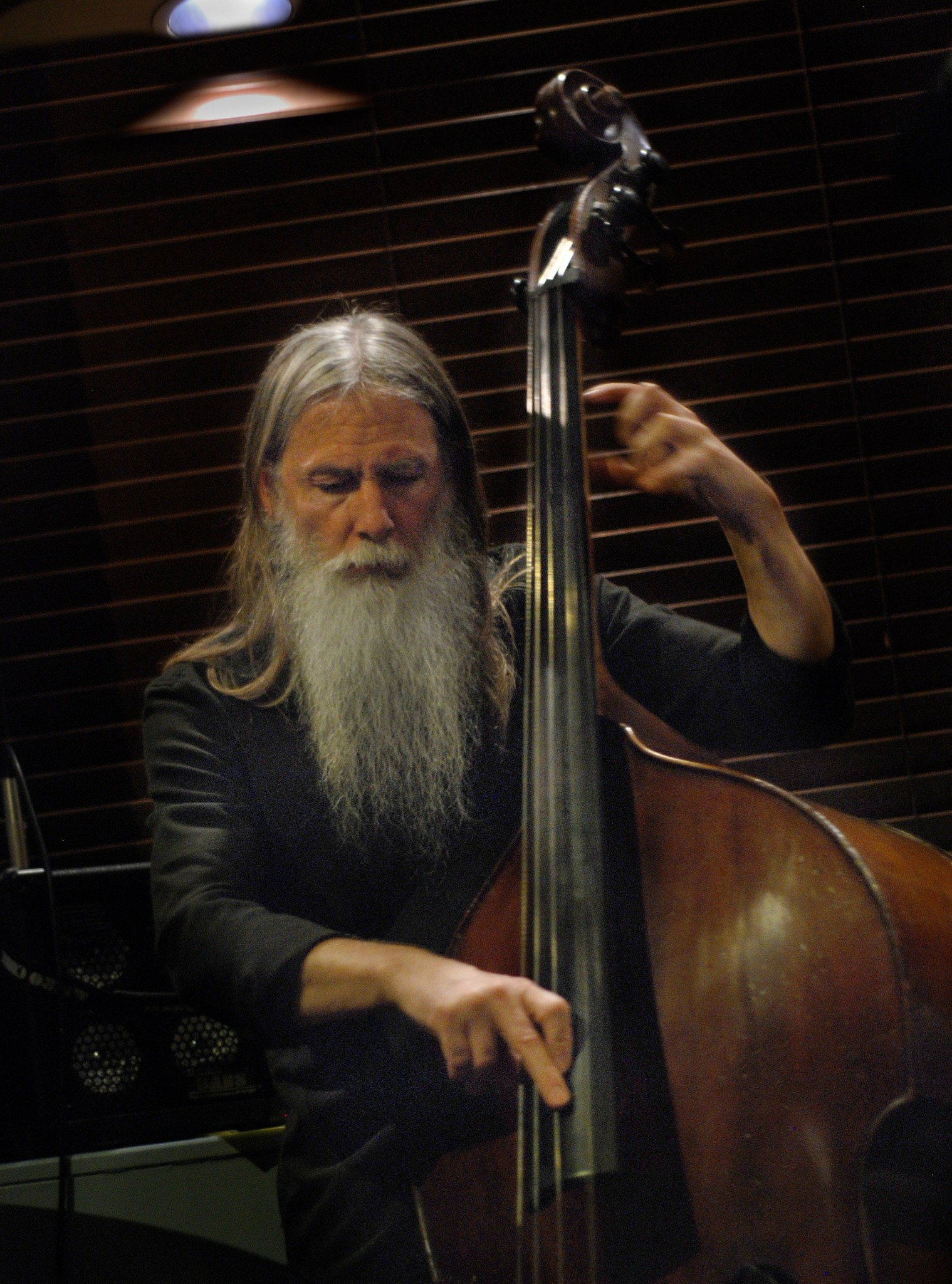We recently connected with David Marr and have shared our conversation below.
Hi David, thanks for joining us today. Did you always know you wanted to pursue a creative or artistic career? When did you first know?
In my late teens and early twenties, I was playing electric bass in cover rock bands in the late 70’s, in San Diego clubs and bars. My brother, cousin and I were renting a house together. My brother was listening to a lot of Jazz back then. One day I was in my room practicing, he knocked and said ” I have something I want you to hear.” So, I went out and he put on John Coltrane’s Trane’s Reign. It sounded completely different than anything I was listening to at the time. In one of the tunes there was a Bass solo. The player was Paul Chambers, one of the master Be-Bop players of the Fifties and Sixties. He started to solo and I thought, ” what is that sound?” He was soloing with the bow on the upright bass. I couldn’t believe what I was hearing, but I knew I wanted to do that- play Jazz. So, the next day I drove downtown to the music shop. I knew the cats that owned it and the drummer that worked there from playing together in rock bands.There was an old plywood upright bass in the shop. I scraped together enough money to buy it. That was it, I was hooked! And so began my career as a freelance jazz artist.

Great, appreciate you sharing that with us. Before we ask you to share more of your insights, can you take a moment to introduce yourself and how you got to where you are today to our readers.
I am an artist, in the broadest sense. I have been a jazz musician for 45 years, traveling the world playing the string bass. My accompaniments have been recorded on more than twenty cd’s. Over the years, my interest in woodworking grew, resulting in a gradual transition to becoming a full-time furniture maker as well as musician. I have been building, working on my art for 30 years. The common thread is that both, music and woodworking are creative outlets, involving improvisation.
I became fascinated with wood as a young boy, making things at the Boy’s Club and later in junior and senior high school wood shop classes. I supported myself, after school, working construction, while I studied music at San Diego State University and honed my skills playing at local jazz clubs. In 1987 I received a scholarship to study music at Berklee College of Music in Boston. I met a French Drummer there who asked if I wanted to do a tour of France over the summer break. I spent two month’s the first summer, and then stayed six month’s the next summer playing all around Europe.
Based in France, I had a lot of free time during the day, since most of our engagements were at night. I gravitated to the museums to look at furniture and was captivated by the turn-of-the-Century European pieces, especially the Art Deco and Art Nouveau styles. The work was incredible, so creative. I vowed that if I ever settled down in one place, I would have a shop.
The opportunity arose, when I moved to Chicago, from New York, and bought an old house that was in total disrepair. I set up a shop in the basement, and over the next ten years, restored the house back to its original condition. Though I continued to make my living playing Jazz, I found that I was spending greater amounts of time (sometimes ten to twelve hours a day) in the shop, improving my skills. Besides working on the house, I began making furniture for my wife and others. After my wife passed away, I decided to move back to San Diego in 2005. My parents were in ill health. I could help them out and concentrate on developing a furniture making business. Having sold my equipment in Chicago, I was able to begin with a clean slate and build a new shop with upgraded machinery.
Being a jazz musician taught me how to live on the slim side of things, so I have the luxury to work on speculative pieces, rather than chasing after projects from clients. And similarly to Jazz, I improvise like crazy. I don’t draw. I get an idea in my head, and I go down to the shop and start building. As the piece develops, I will make design decisions. I like incorporating little details, such as 1/16′ inlays on the edges. It is really time consuming, but it sets the pieces apart. I began submitting my work to fairs and galleries and garnering prizes and sales so I knew I must being doing things right.
Almost all my work involves veneer over substrates. For panels, I use lumber core, sandwiched with 1/8″ or 1/4″ MDF on each side, before I veneer. Lumber core is nice and light and real stable, and the MDF offers a flat surface for adhesion. For a lot of the legs and curved elements, I use veneer over Poplar. If I can get the curve out of a piece of solid Poplar, I will make a pattern, flush rout the work pieces, and clean them all up by hand. Then, I make cauls, lined with cork, for pressing the veneer. For parts in which solid Poplar does not provide enough strength, I will use layers of 1/8″ bendable Poplar, skinned with 1/8″ MDF.
The custom furniture business is tough, as is any creative art form. I get inquiries from people, usually with a picture of some $400 piece that they got off the Internet. When I quote them a price, I usually never hear from them again. With prospective clients, I begin by asking their budget, and if it is reasonable, I will work with them on price and visit their home to see what they want.
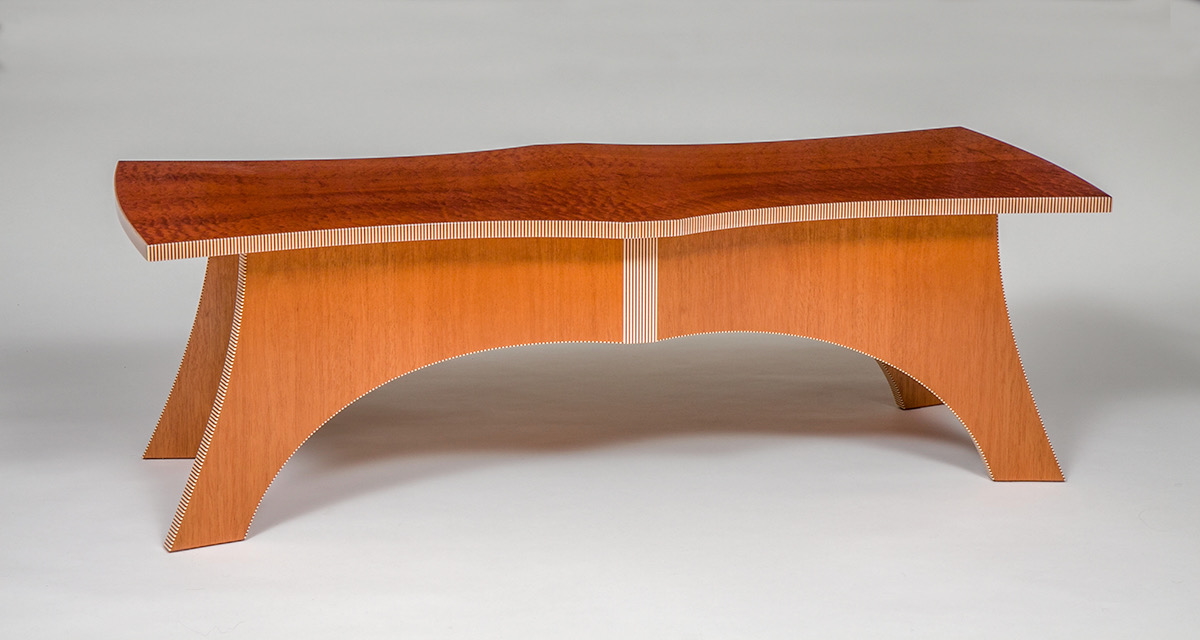
Let’s talk about resilience next – do you have a story you can share with us?
I moved to New York in the early nineties. Being a Jazz musician, it was where I needed to be to continue my growth and challenge myself. You know the old saying, “If you can make it there, you can make it anywhere.” I moved to the City with my room mate from Boston, a great guitarist and now my best friend for close to forty years. We found an apartment in Hell’s Kitchen, a very sketchy part of Manhattan. My bedroom was the size of a closet. It was pretty cheap, $400 a month each. I had very little money and lived on rice and beans and not much else. We would walk up and down the upper east and west sides carrying our instruments, stopping in restaurants and bars asking if we could play for an half hour for free. If they liked what they heard maybe we could get a night for pay. There was tons of rejection, most didn’t even give us the time of day. I was down to $34 in my checking account and tried getting a day gig at Tower records. I knew music, but they would not consider me because I had no retail experience.
Then one day I got a call from a good friend of mine, another Bass player asking if I wanted to sub a gig for him. Of course I did! It was in the village backing up a Drag Queen who impersonated Billie Holiday. The gig paid $100 per show and was great. The next day my friend called and said he couldn’t do the gig anymore, he was too busy. He asked if I wanted the gig and said the singer loved me. It turned out that he had two to three shows every week. The singer was exceptional and also great to work with. He booked out of town shows that paid even more. I was making it in New York and started to pick up more work with lots of different cats. If you love what you do, you have to keep moving. It’s very difficult, especially for artist’s, but it’s so important to stay true to what you believe in.

Do you think there is something that non-creatives might struggle to understand about your journey as a creative? Maybe you can shed some light?
Most non-creatives that I’ve interacted with don’t understand the sacrifice’s that artists go through in their lives. I don’t think they understand how much time and effort we put into creating our art. Not to mention all the rejection we deal with. It’s sad to say, but it seems that what society now craves is instant gratification. Many people don’t want to work that hard and spend the twenty to thirty years, a lifetime of practice and struggling required to create art. Like anything, you can’t understand it unless you’re in it.
Contact Info:
- Website: www. Vincent Fine Furniture.com
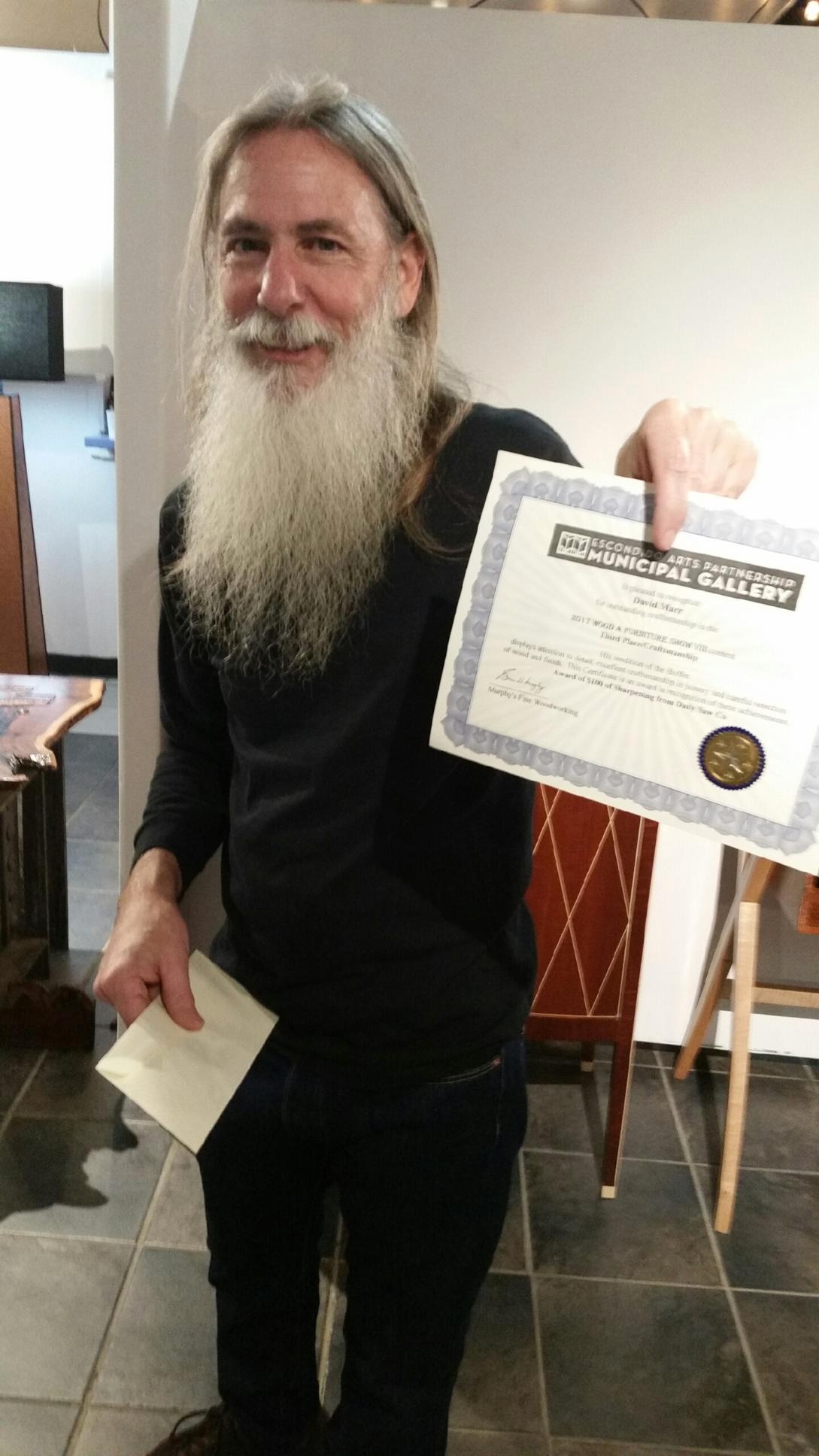

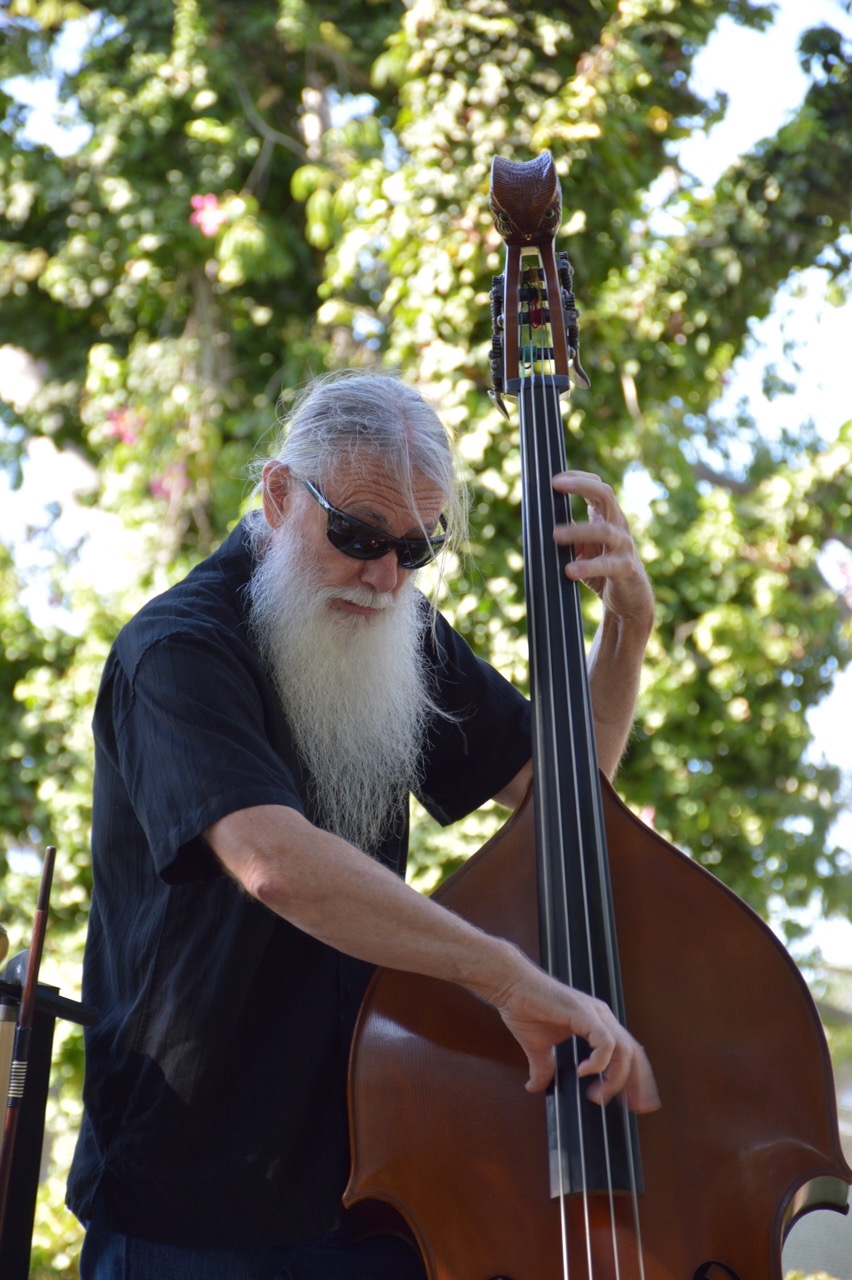
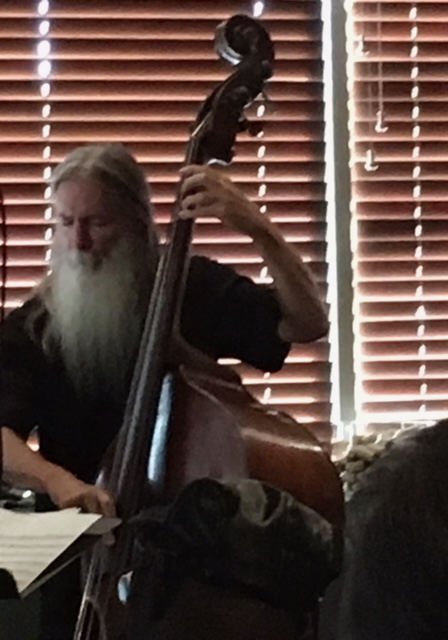
Image Credits
Michael Oletta
Jared Nelson
Craig Carlson


